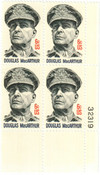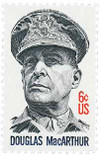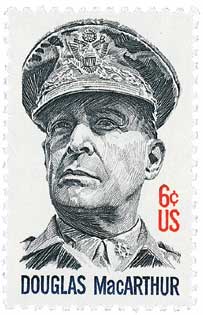
# 1424 - 1971 6c General Douglas MacArthur
Birth of Douglas MacArthur
MacArthur was the son of Arthur MacArthur, Jr., a US Army captain and recipient of the Medal of Honor for his Civil War service. The family lived in a series of Army posts in the Old West, where MacArthur remembers he “learned to ride and shoot even before I could read or write – indeed, almost before I could walk and talk.”

MacArthur graduated first in his West Point class, earning the third-highest score in its history. After a succession of posts, MacArthur was assigned to the War Department and then became the Army’s first press officer.
When the US entered World War I, MacArthur organized the 42nd “Rainbow” Division made up of National Guard. MacArthur then served with distinction in France, where he was eventually promoted to brigadier general. MacArthur participated in the Champagne-Marne Offensive, Battle of Saint-Mihiel, and the Meuse-Argonne Offensive and was decorated with the Croix de Guerre, two Distinguished Silver Cross awards, and seven Silver Stars.
After the war, MacArthur was appointed Superintendent of the Military Academy and served again in the Philippines. Over the next few years, he served as Chief of Staff of the US Army and created the Philippines Army. Retiring from the US Army in 1937, MacArthur was appointed Field Marshall of the Philippine Army.
However, as the possibility of war with Japan arose in 1941, MacArthur was recalled to serve as commander of US Army Forces in the Far East. Initial attempts there were unsuccessful, with MacArthur being forced to evacuate from the Philippines by March 1942. He was later awarded a Medal of Honor for his defense of the Philippines.
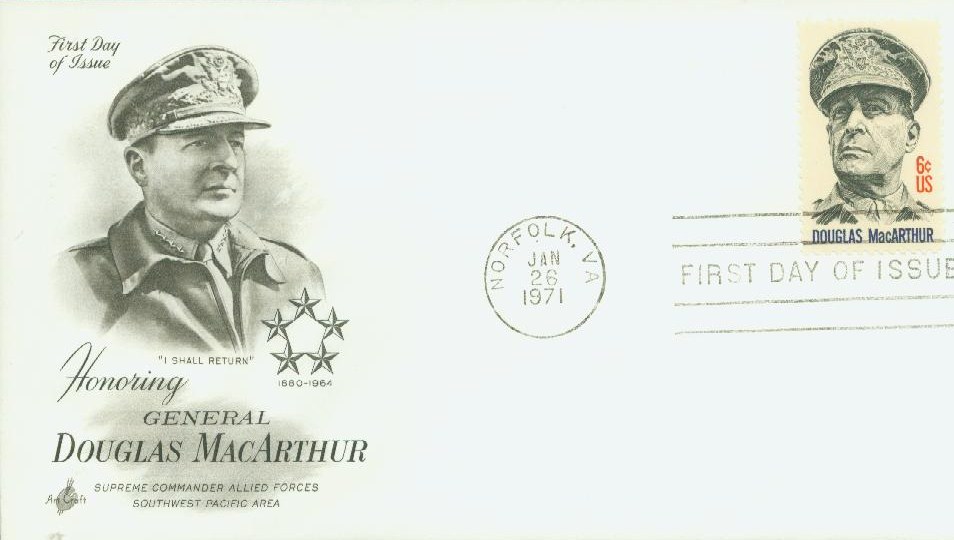
MacArthur then took command of the Allied forces in the Southwest Pacific and successfully defended New Guinea. He led the invasion of Leyte and the eventual liberation of the Philippines. In August 1945, he presided over the Japanese formal surrender ceremonies. After the war, MacArthur was made supreme commander of occupied Japan, to help the nation rebuild itself.
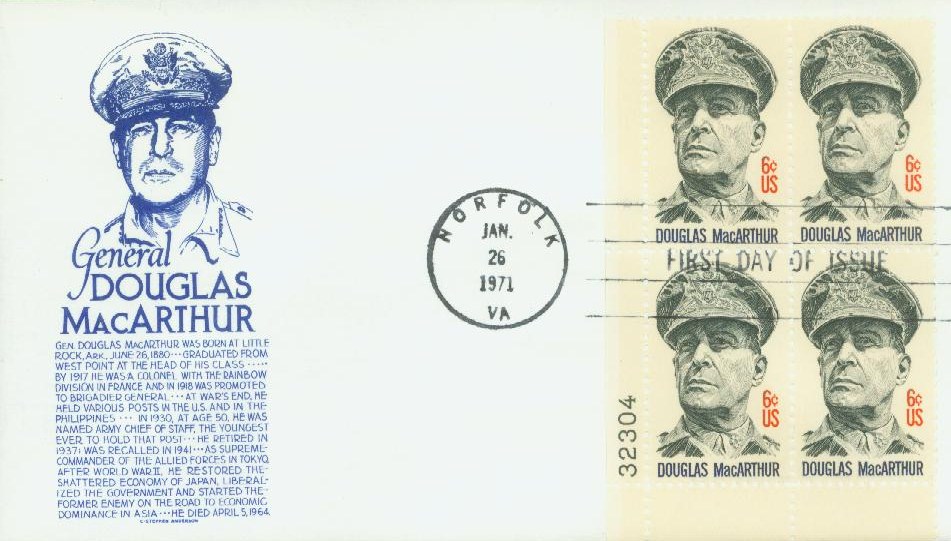
When the Korean War broke out in 1950, MacArthur was placed in charge of the United Nations coalition defending South Korea from communist North Korea. The successful invasion at Inchon sent the North Koreans in retreat, and it looked like the war would be over by the fall of 1950.
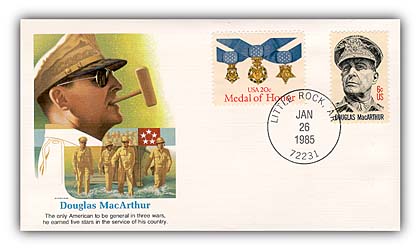
China sent a massive army that took MacArthur by surprise and pushed UN forces back across the 38th Parallel. The general asked President Truman for permission to conduct bombing raids in China with the possibility of using an atom bomb. Truman refused, fearing the actions would escalate into World War III.

MacArthur publicly criticized the president, who then removed the commander from his office on April 11, 1951. Americans disagreed with Truman’s actions and welcomed MacArthur home as a hero. Senate hearings concluded the president had acted correctly.
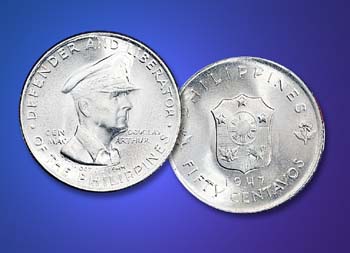
In his later years, MacArthur reconciled with President Eisenhower. He also met with Presidents Kennedy and Johnson and cautioned them against a military build-up in Vietnam. He died on April 5, 1964. During his lifetime, MacArthur had earned more than 100 military decorations from the US and other countries. According to his wishes, he was buried in Norfolk, Virginia, where the MacArthur Memorial was established as a museum dedicated to his lifetime of military service.
Birth of Douglas MacArthur
MacArthur was the son of Arthur MacArthur, Jr., a US Army captain and recipient of the Medal of Honor for his Civil War service. The family lived in a series of Army posts in the Old West, where MacArthur remembers he “learned to ride and shoot even before I could read or write – indeed, almost before I could walk and talk.”

MacArthur graduated first in his West Point class, earning the third-highest score in its history. After a succession of posts, MacArthur was assigned to the War Department and then became the Army’s first press officer.
When the US entered World War I, MacArthur organized the 42nd “Rainbow” Division made up of National Guard. MacArthur then served with distinction in France, where he was eventually promoted to brigadier general. MacArthur participated in the Champagne-Marne Offensive, Battle of Saint-Mihiel, and the Meuse-Argonne Offensive and was decorated with the Croix de Guerre, two Distinguished Silver Cross awards, and seven Silver Stars.
After the war, MacArthur was appointed Superintendent of the Military Academy and served again in the Philippines. Over the next few years, he served as Chief of Staff of the US Army and created the Philippines Army. Retiring from the US Army in 1937, MacArthur was appointed Field Marshall of the Philippine Army.
However, as the possibility of war with Japan arose in 1941, MacArthur was recalled to serve as commander of US Army Forces in the Far East. Initial attempts there were unsuccessful, with MacArthur being forced to evacuate from the Philippines by March 1942. He was later awarded a Medal of Honor for his defense of the Philippines.

MacArthur then took command of the Allied forces in the Southwest Pacific and successfully defended New Guinea. He led the invasion of Leyte and the eventual liberation of the Philippines. In August 1945, he presided over the Japanese formal surrender ceremonies. After the war, MacArthur was made supreme commander of occupied Japan, to help the nation rebuild itself.

When the Korean War broke out in 1950, MacArthur was placed in charge of the United Nations coalition defending South Korea from communist North Korea. The successful invasion at Inchon sent the North Koreans in retreat, and it looked like the war would be over by the fall of 1950.

China sent a massive army that took MacArthur by surprise and pushed UN forces back across the 38th Parallel. The general asked President Truman for permission to conduct bombing raids in China with the possibility of using an atom bomb. Truman refused, fearing the actions would escalate into World War III.

MacArthur publicly criticized the president, who then removed the commander from his office on April 11, 1951. Americans disagreed with Truman’s actions and welcomed MacArthur home as a hero. Senate hearings concluded the president had acted correctly.

In his later years, MacArthur reconciled with President Eisenhower. He also met with Presidents Kennedy and Johnson and cautioned them against a military build-up in Vietnam. He died on April 5, 1964. During his lifetime, MacArthur had earned more than 100 military decorations from the US and other countries. According to his wishes, he was buried in Norfolk, Virginia, where the MacArthur Memorial was established as a museum dedicated to his lifetime of military service.






